Now seems like a bold time to be launching a new kind of hot hatchback. If it’s a particularly special or brilliant kind – say, the Toyota GR Yaris, which is probably both – it’ll no doubt be fine. If it has drive batteries and electric motors as well as a combustion engine, meanwhile, like the ones Peugeot Sport is rumoured to be working on? Well, that might be all right, too.
But what if it’s a classic, fossilfuelled, front-driven performance five-door you’re introducing; one with a sense of buttoned-down German conservatism about it? Without a Nürburgring lap record with which to grab attention or a tax-saving plug-in powertrain, would such a car be able to cut through?
We’re about to find out because the new BMW 128ti is exactly that kind of car. It marks the return of a model identity suffix not used since the 3 Series Compact hatchback was phased out, and most memorably adopted by the ‘new class’ 2002 of the late Paleozoic era, I believe (read the late 1960s). Exactly what that ‘ti’ suffix will mean to today’s hot hatchback buyer remains to be seen. For those who like this car, I suspect the stick-on stripes and red body parts will mean considerably more.
The 128ti is much more than just a ‘stickers, spoilers and wheels’ marketing exercise, though. It has been the subject of a detailed makeover to the chassis, suspension and steering intended to answer what both BMW and its critics perceive to be shortcomings of the current 1 Series in general and of the M135i xDrive in particular.

The car rides on specially tuned suspension with shorter coil springs than M Sport versions of the standard 1 Series use, and that cradles it 10mm closer to the road. It gets the M135i xDrive’s special ‘pre-loaded’ antiroll bars, but also firmer springs and higher-rated dampers than its pricier range-mate (the springs raising the car’s suspension rates at the rear axle by more than at the front, interestingly). The same Torsen limited-slip differential features on the front axle as you’ll find in an M135i xDrive, too, and firmed-up suspension bushing and mountings come in all round.

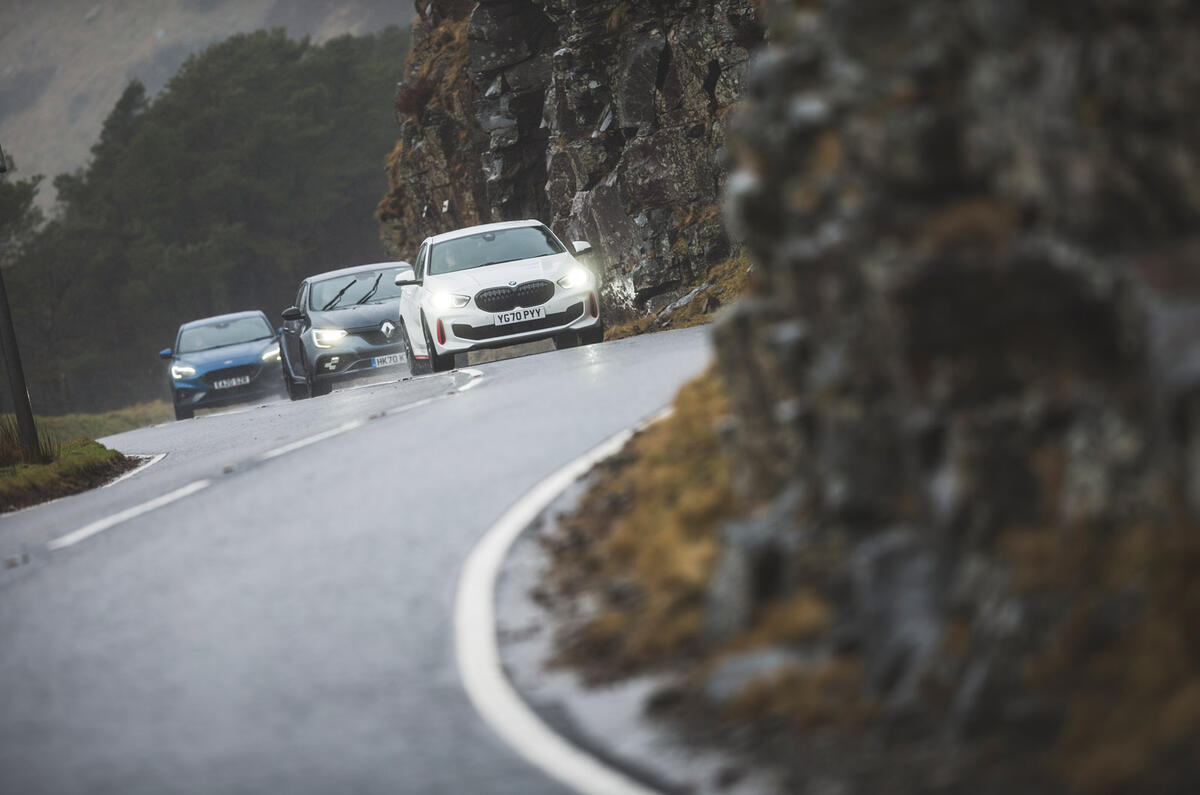
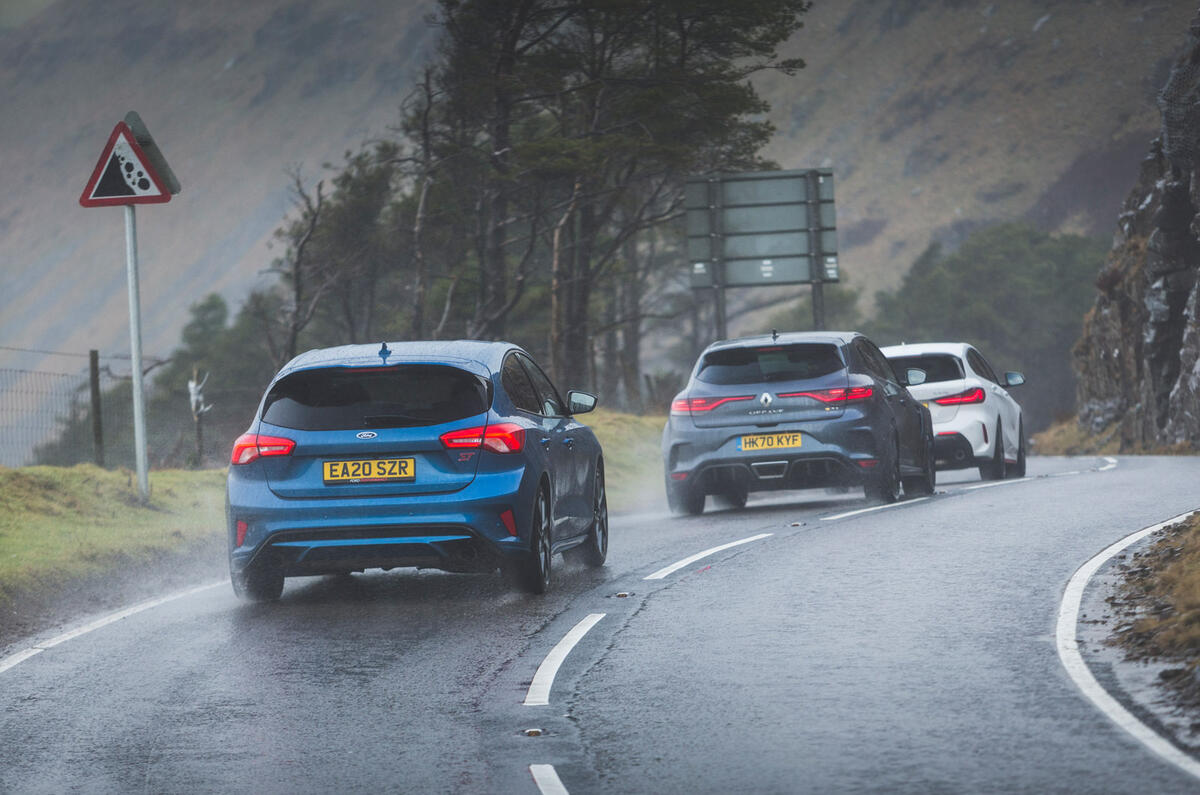

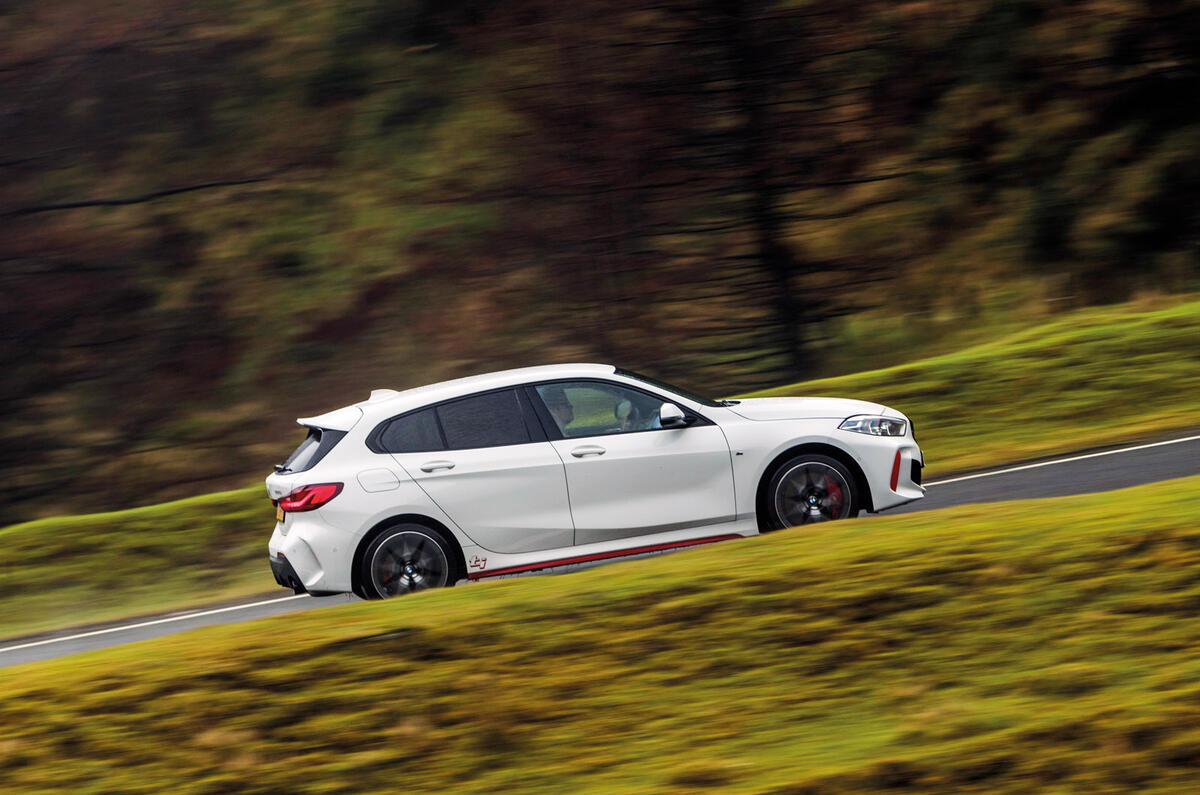
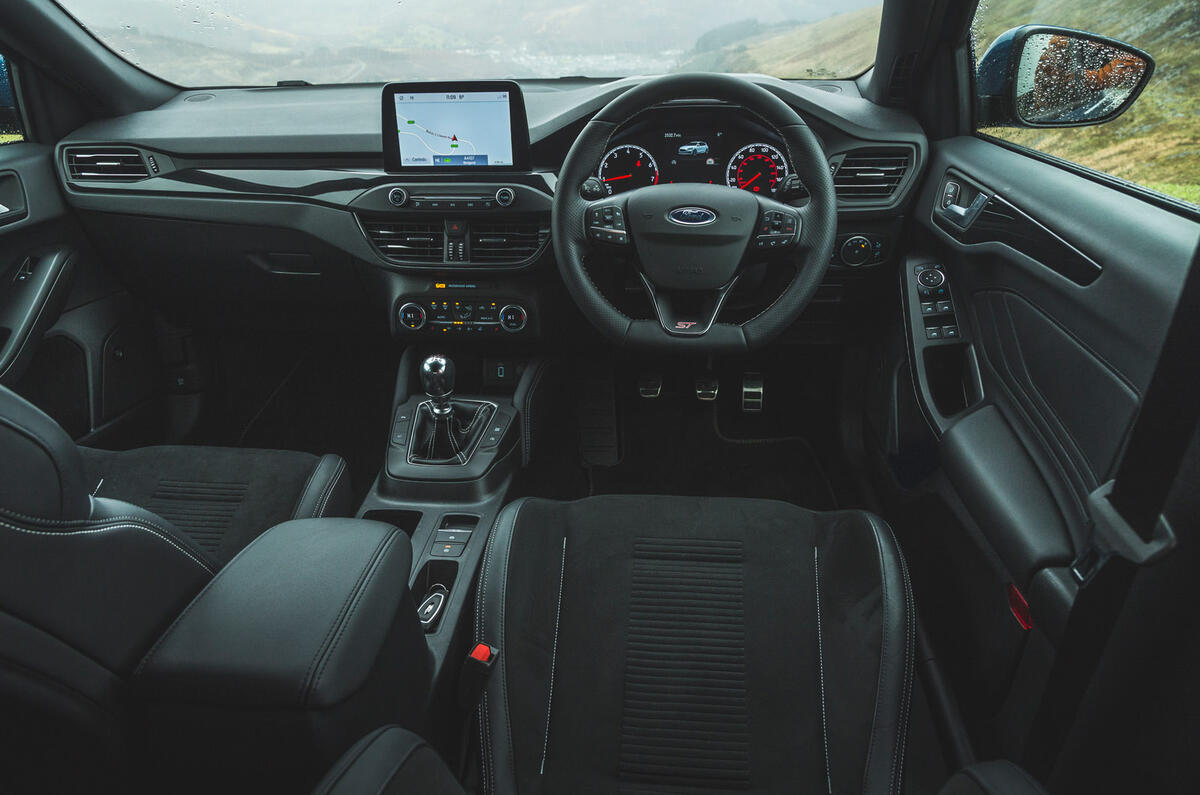
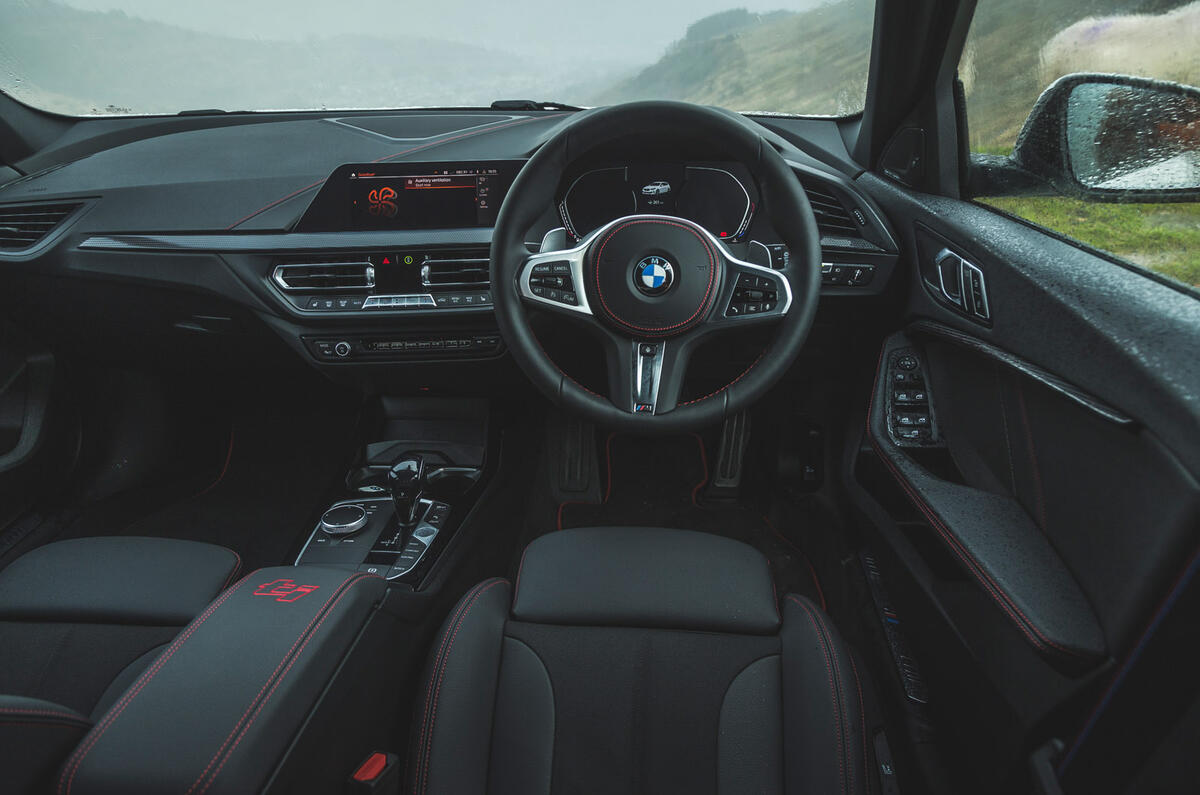
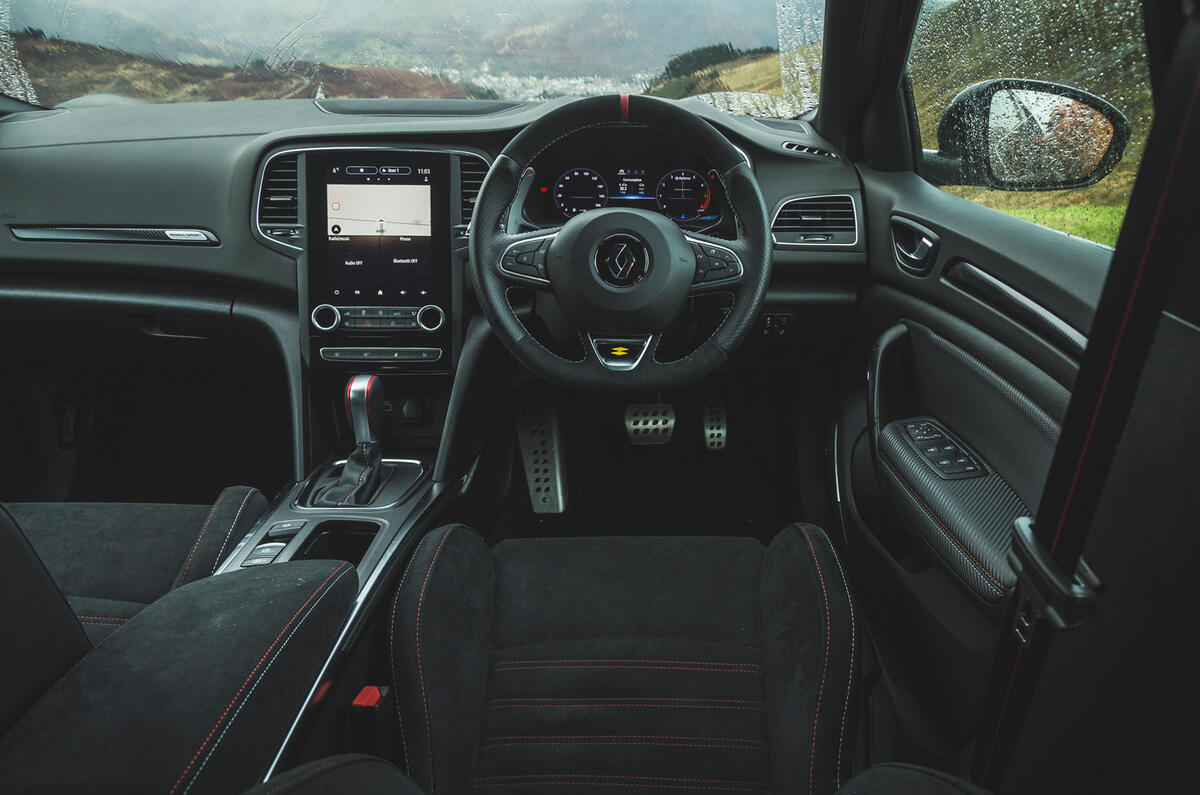
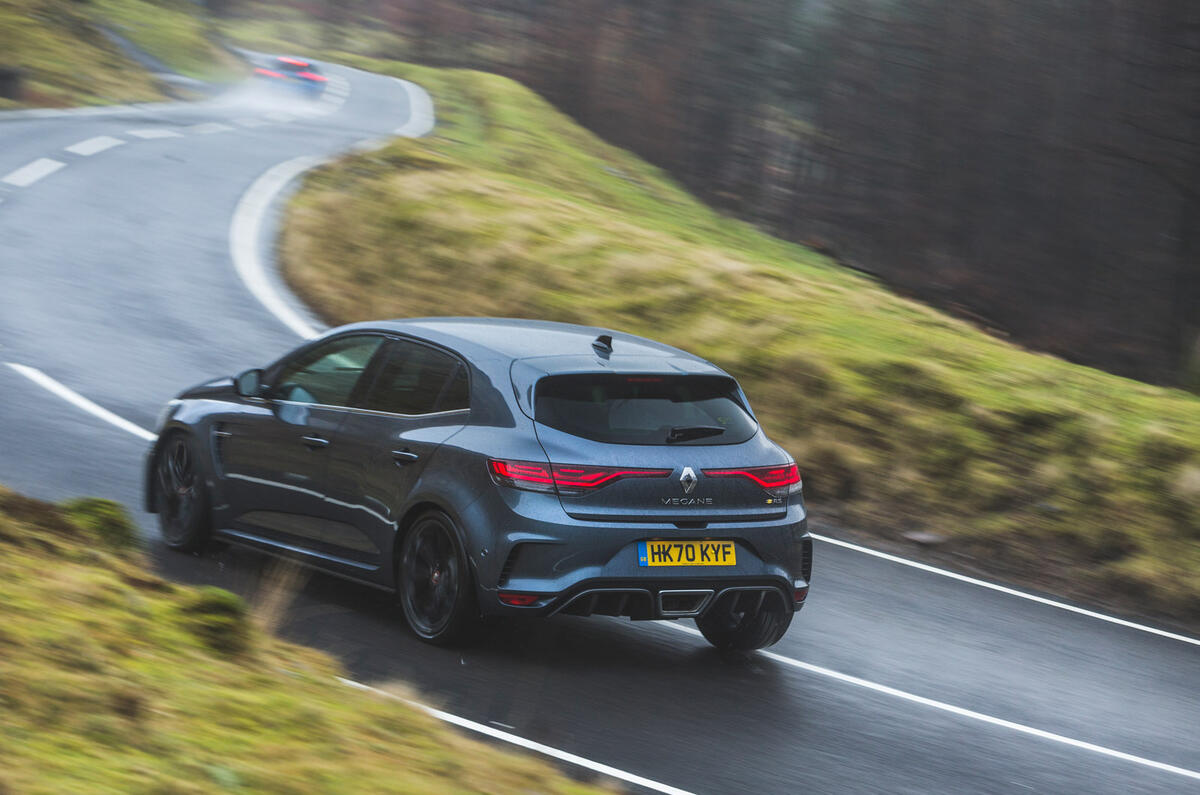
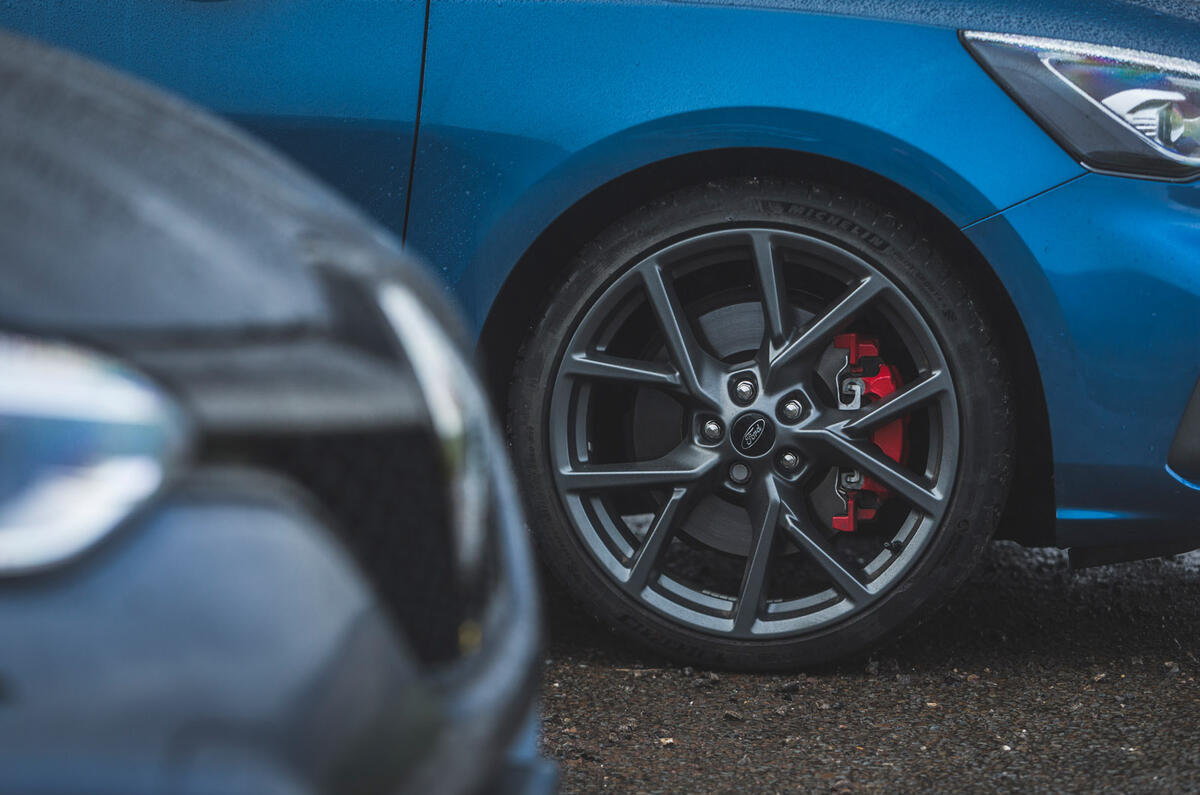
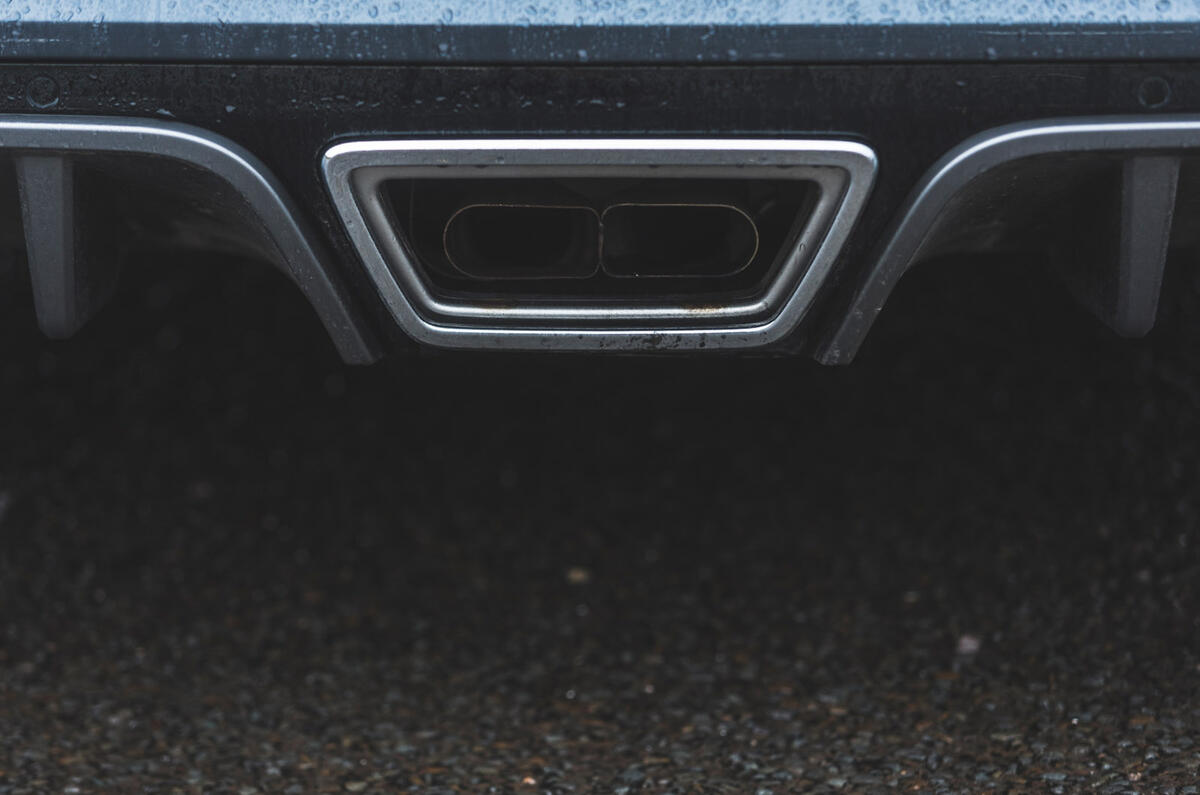
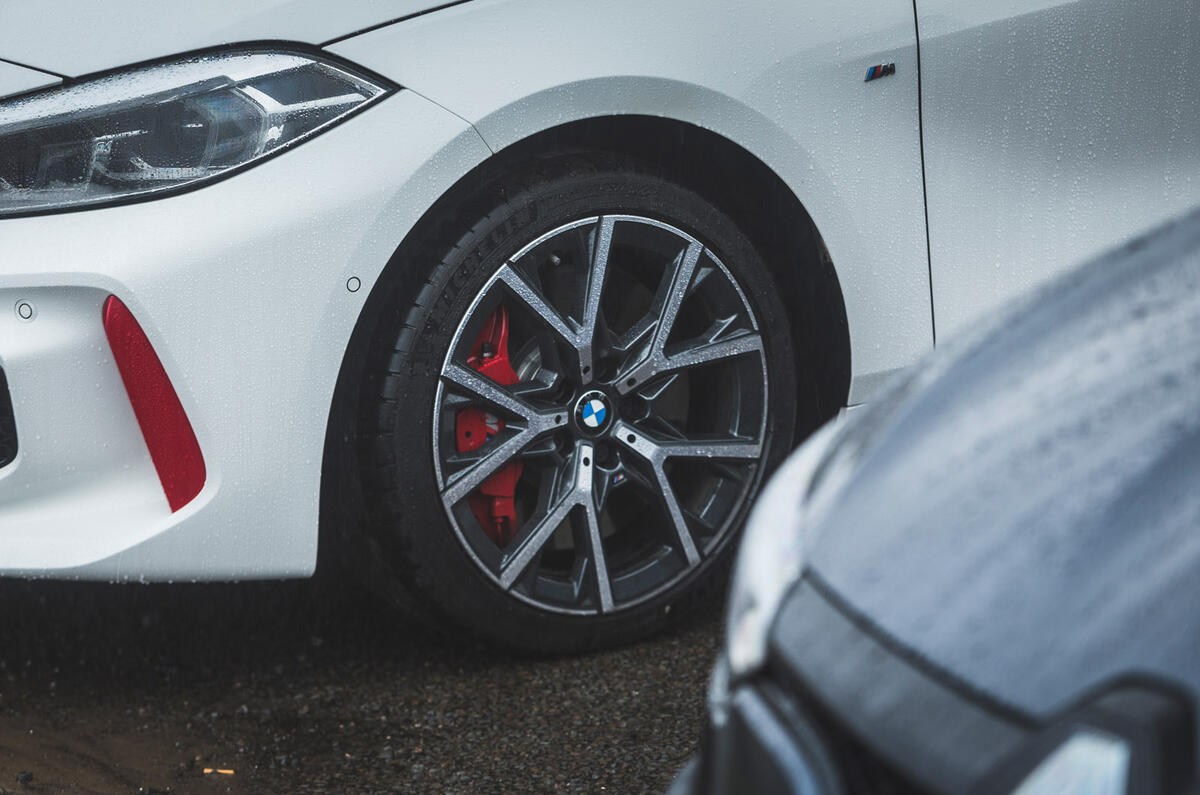
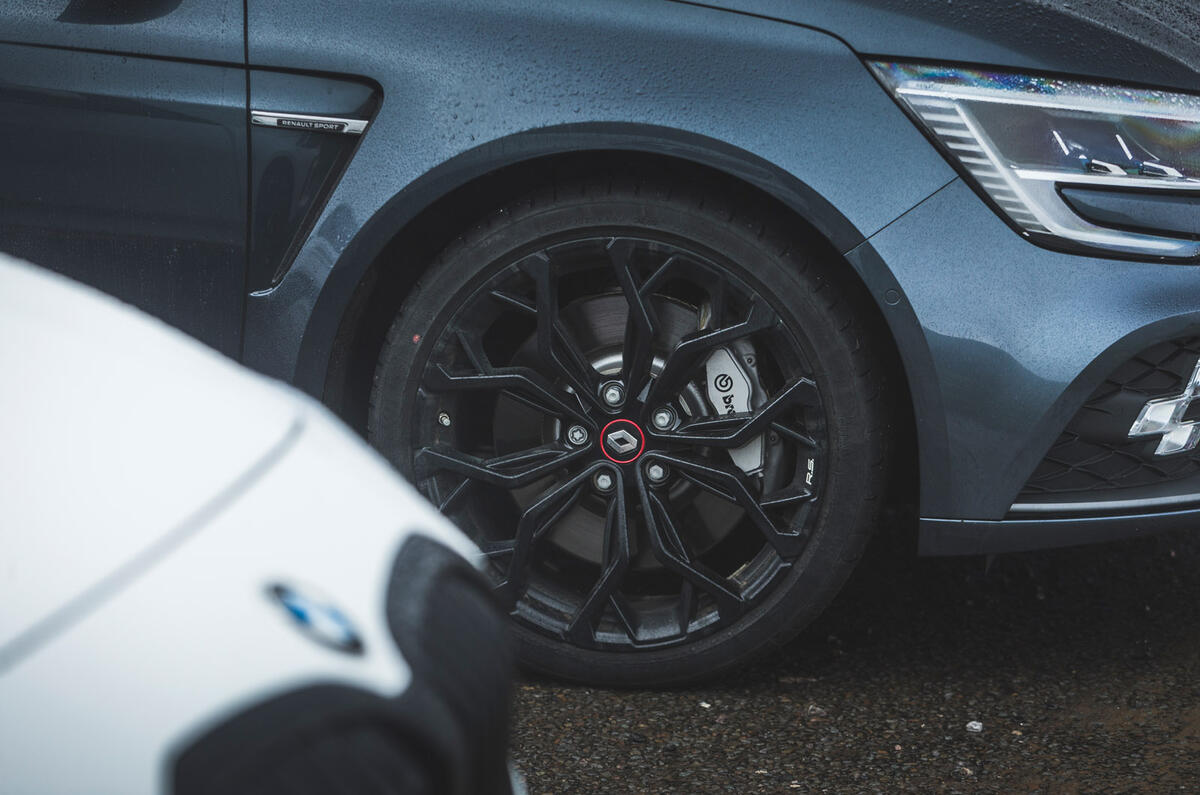
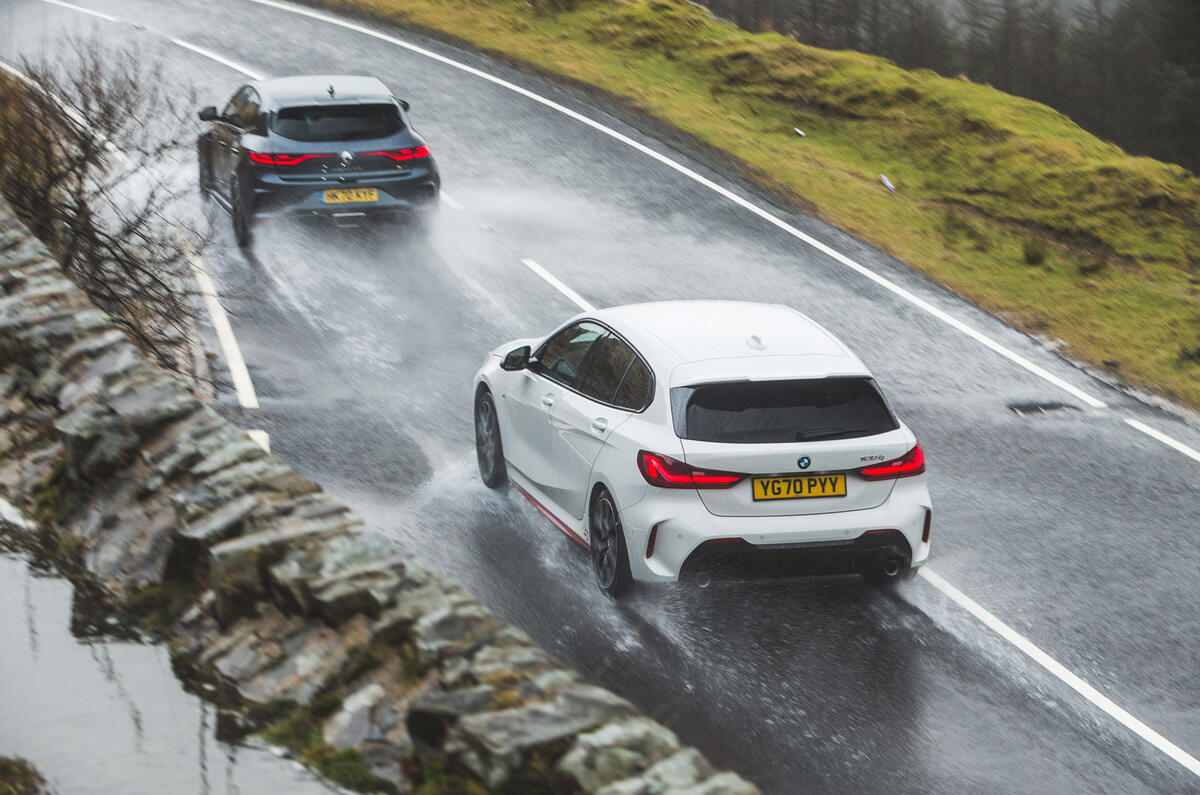

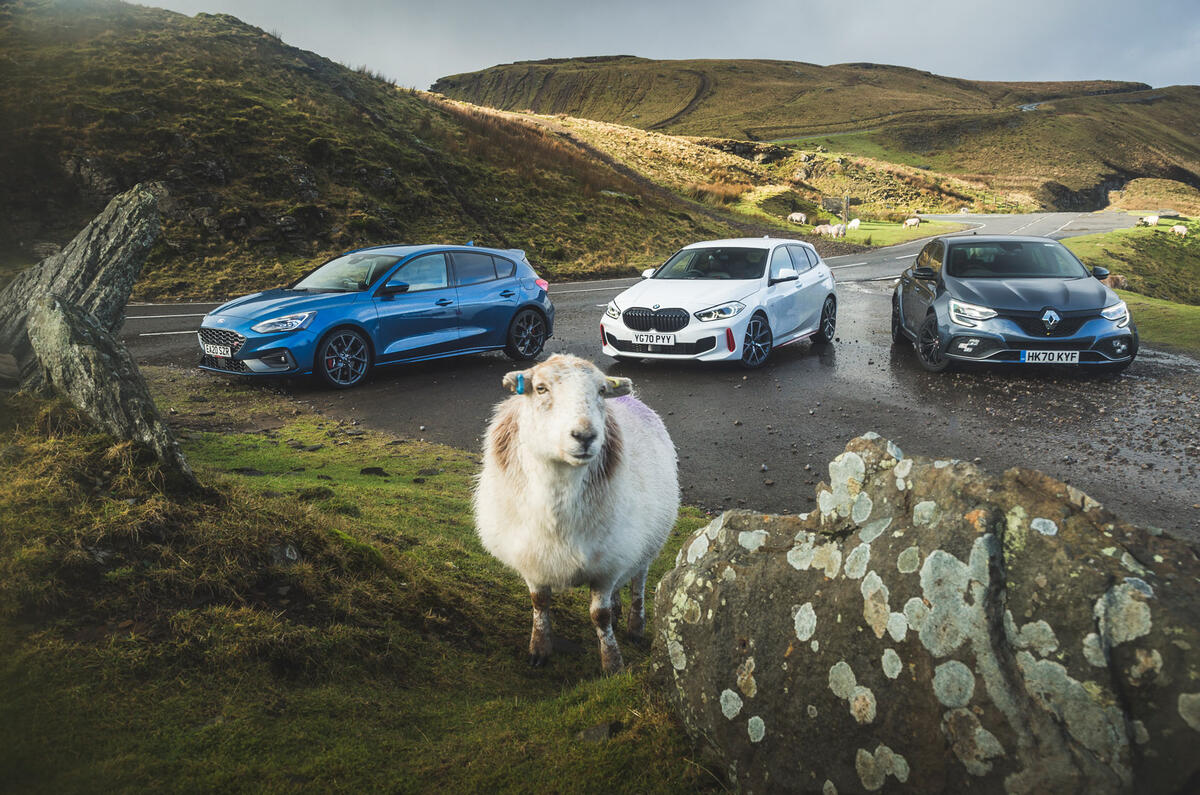


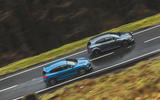
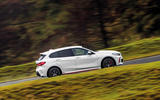
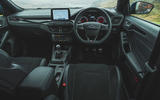
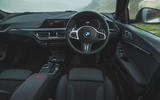
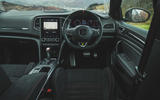
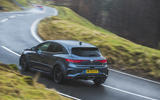
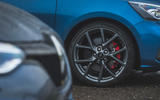
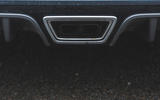
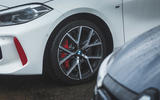
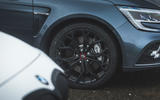
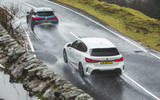

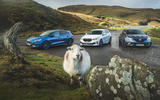











Join the debate
Add your comment
Nice review - good to hear the author's point of view and his explanation.
Nit-picking perhaps, but while the BMW's cabin may be 'classier', I massively prefer the speedo and rev dials in the Ford to those in the 128ti and even the Megane.
I agree, there's room for both ways of changing gear, it's your, our choices, no one is telling to use them, flappy paddles?, are they that popular anymore?, if we have an auto, we stick it in D' and go, there are situations where a manual is better than an auto, but not many, it's the same old Chestnut, the same question about which cars the best, the answer usually is?, your money, your choice, you live with it.
When the manufacturer you prefer doesnt offer the option of manual or automatic, only one or the other, its not really your choice is it, its their choice not to offer an alternative.
Once again a review in Autocar is basically about manual vs auto transmissions. It's time to call it quits guys. The auto with paddleshift is the way all car makers are going for all classes of cars.
There are many reasons, emissions tests superiority is just one, but also performance (yes, autos are now quicker than manuals to change gear) smoothness and convenience are yet more.
I am always struck by how many people with manuals habitually drive holding or resting their hand on the knob, leaving only one hand on the wheel, so I would add safety as well.
How often are you really going to be driving on open country roads where a manual becomes more involving and enjoyable. compared to stop/start urban areas where manuals are just a chore?
Bimfan just try accepting that there are people who enjoy manual transmissions. You prefer autos which is fine but I do not want your choice foisted on me without the option. As for safety, I never see drivers resting their hand on the gear knob, I see drivers of automatics with one hand on the wheel and one freed up for playing with a phone or the screens. And the answer to your last paragraph is plenty, including me. We do not all live in cities.
Really, that's how it works now? I though the majority wins. You're in the minority.
If automatics are so superior, why do manufacturers offer the option to override the gearbox with flappy paddles etc?